◖F.N. Souza: Eroticism, Power, and Conflict in Art◗
Francis Newton Souza (1924–2002) was a trailblazing modernist whose art defied conventions, explored human desires, and exposed societal hypocrisies. A founding member of India’s Progressive Artists’ Group (PAG), Souza was known for his radical artistic expressions, particularly his confrontational depictions of the human form. His oeuvre is filled with erotic imagery, grotesque nudes, and obscene representations that are far from being merely provocative; rather, they engage deeply with themes of power, conflict, and sexuality (Fig.1).
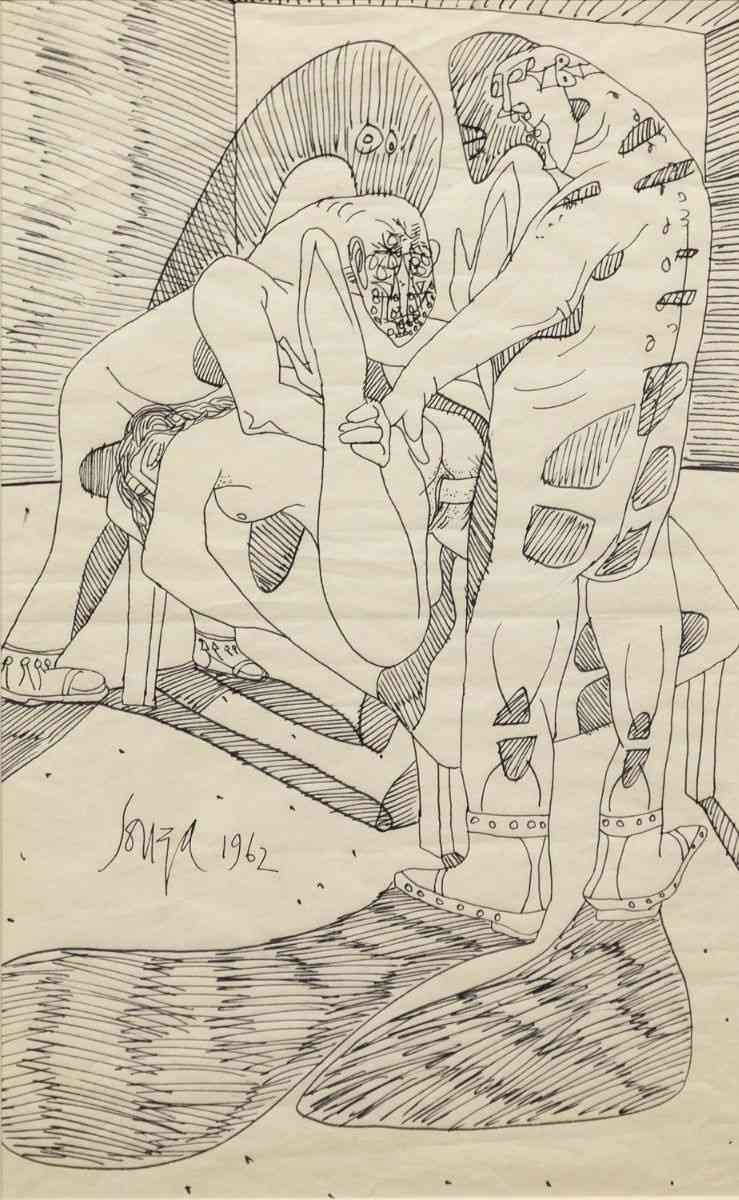
Eroticism and the Human Form
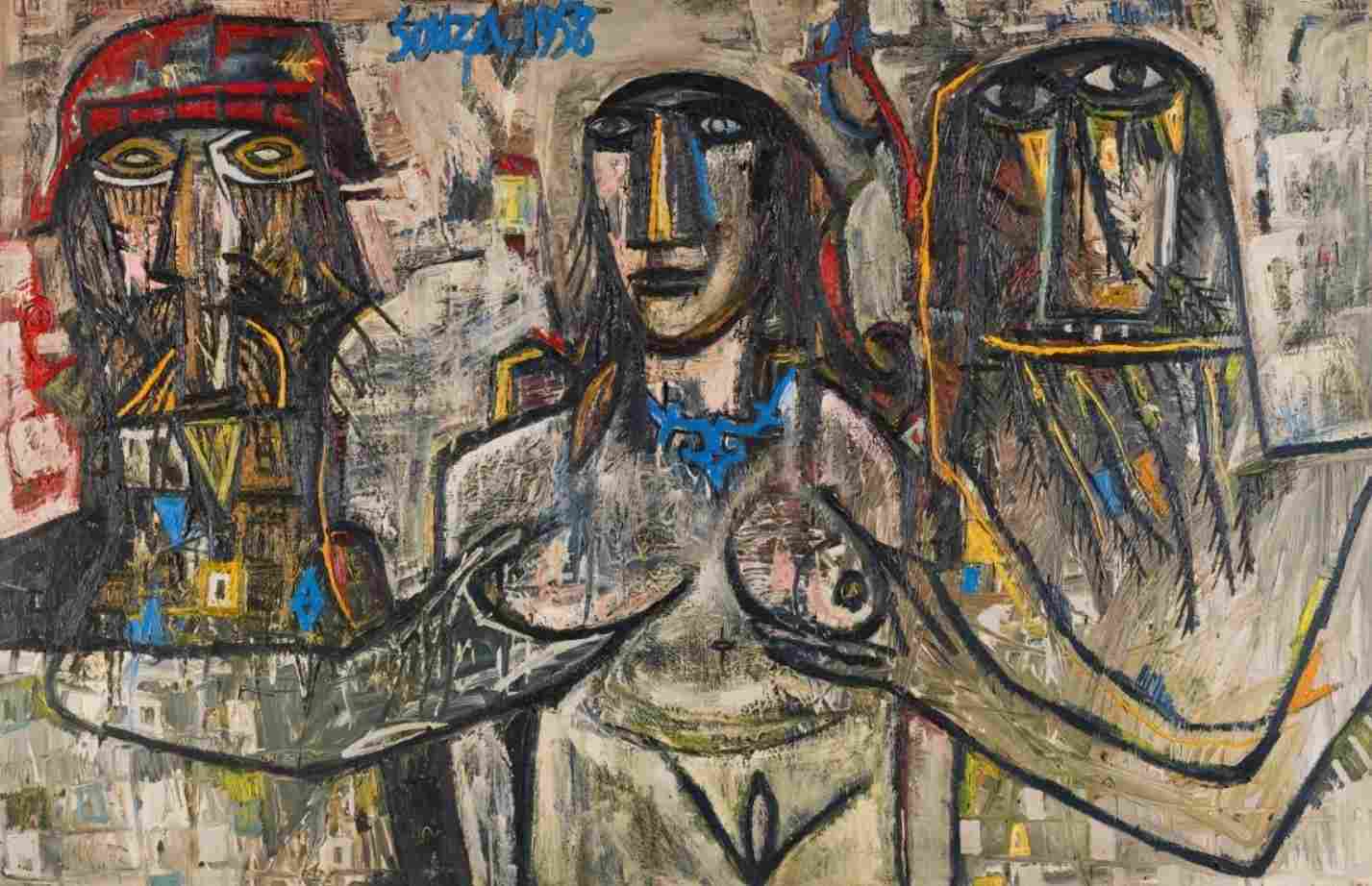
Souza’s fascination with the nude female body is a defining feature of his work. However, unlike the classical or romanticized nudes of Western art, his figures are often distorted, raw, and aggressively sexual. Works such as Untitled (1958) depict exaggerated forms with sharp, almost violent lines, evoking an unsettling mix of attraction and repulsion (Fig.2). These figures are neither idealized nor passive; instead, they confront the viewer, their presence demanding attention and evoking discomfort. His paintings of nude women reflect a complex perspective—both reverential and brutal. The female form in his work embodies an untamed force, at times appearing almost monstrous, with jagged contours and exaggerated sexual features. The distortion in his figures conveys a deeper psychological intensity, representing both desire and the unease surrounding it.
Obscenity as Rebellion
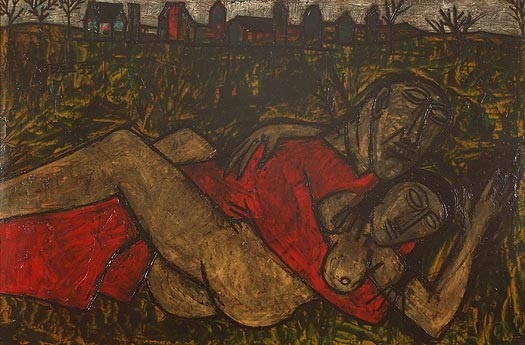
Souza’s work was often labeled obscene, especially during his time in conservative post-independence India. His explicit renderings of sexual organs and grotesque couplings challenged moral conventions. Works such as Lovers (1965) and Sex (1965) depict raw, primal passion, often framed in claustrophobic compositions (Fig.3). The deliberate obscenity in these works is not just an act of defiance but a confrontation with hypocrisy—exposing the repression and moral duplicity of religious and social structures. In his autobiography Words & Lines (1959), Souza unapologetically defends his erotic imagery, arguing that art should not shy away from the realities of desire and the body. His willingness to depict sex with unfiltered intensity aligns with his larger critique of prudishness and sanctimonious morality.
Power, Violence, and the Grotesque
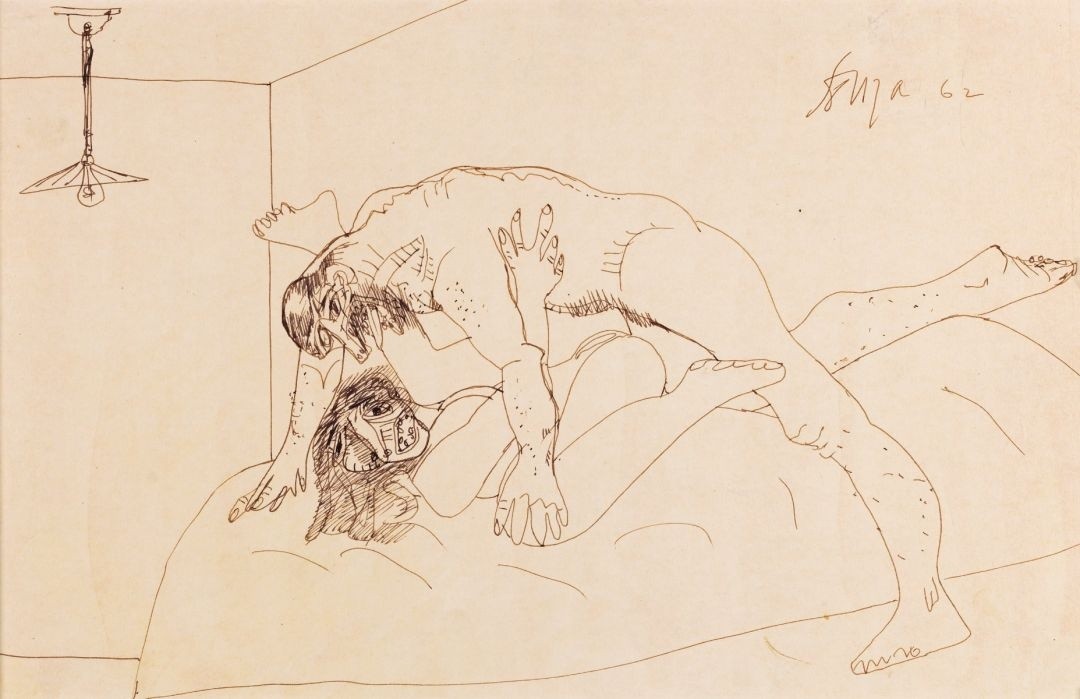
The theme of power is integral to Souza’s erotic imagery. His paintings often depict sexual dominance and submission, revealing the interplay of control and vulnerability. The grotesque distortions of the human body reflect the brutality of power, whether sexual, religious, or political. Souza was deeply critical of institutional power—especially the Catholic Church, which he saw as hypocritical in its suppression of sexuality (Fig.4). In works such as Tantra (1959), he intertwines eroticism and religion, presenting figures with overtly sexual elements (Fig.5). By blending the sacred with the profane, Souza forces the viewer to confront the repressive nature of authority and its inherent contradictions.
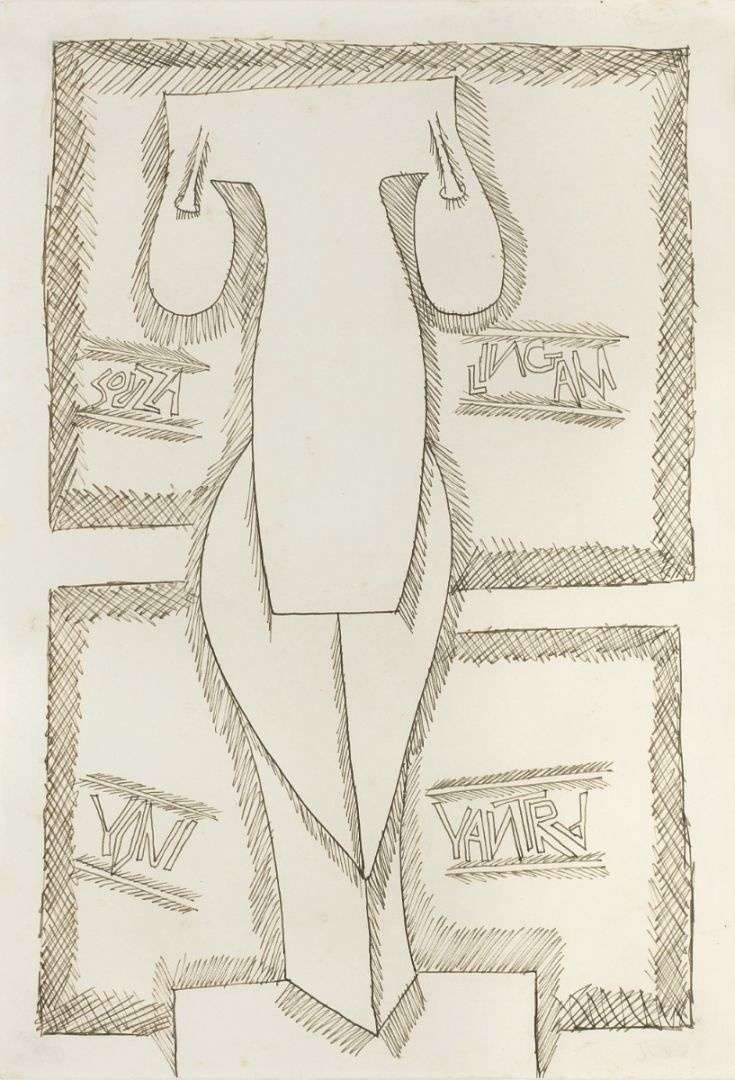
His works also comment on colonialism and violence. The distortions in his figures suggest bodies that have been tortured or deformed by oppressive forces. His Head series, with its brutal, fractured faces, can be seen as expressions of inner turmoil, symbolizing the psychological scars left by historical and political violence.
Sexuality as a Subversive Force
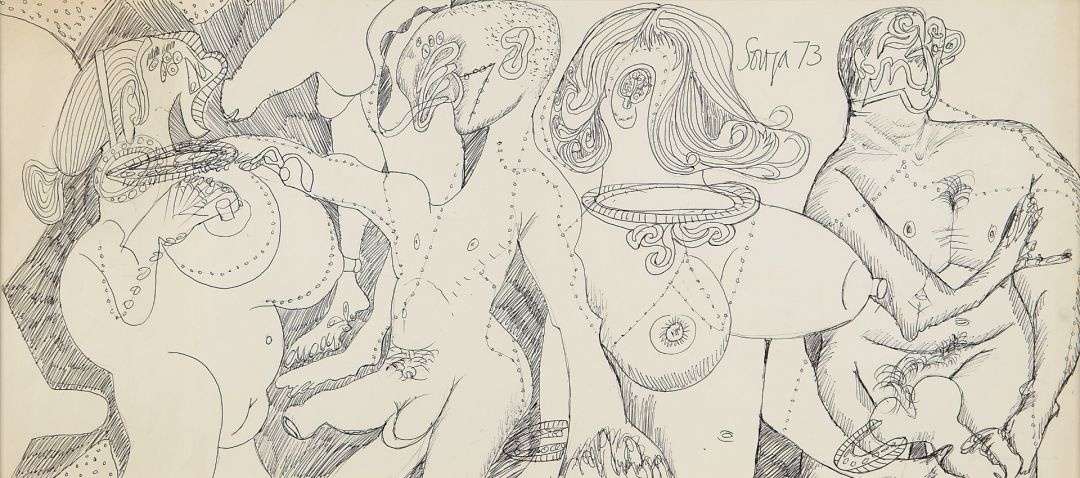
Sex in Souza’s paintings is never just about pleasure—it is a raw, untamed force that disrupts order and challenges power structures. His work draws on themes of primal instinct, stripping away the veneer of civility to reveal human beings in their most unfiltered state. By portraying sexuality with such rawness, Souza not only attacks the prudery of society but also highlights the inherent conflicts within human relationships—between passion and destruction, love and violence (Fig.6). Unlike the eroticism of the Western Renaissance or the sensuality of Indian temple sculptures, Souza’s depictions lack any sense of idealization. Instead, they border on the grotesque, presenting sexuality as something unsettling yet vital. His figures, with their exaggerated features and unsettling stares, engage in a constant battle between desire and repulsion.
Conclusion
F.N. Souza remains one of the most provocative and influential artists in modern Indian art. His fearless depictions of eroticism, power, and conflict challenge viewers to confront their own discomforts and biases. By pushing the boundaries of the acceptable and the obscene, Souza’s work continues to provoke thought and debate, reaffirming art’s role as a space for dissent and radical expression.
Text by Museum of Eroticism
Image Courtesy: Delhi Art Gallery (DAG), Sothebys.
References:
1. Dalmia, Y. (2001). The Making of Modern Indian Art: The Progressives. Oxford University Press.
2. Kapur, G. (2000). When Was Modernism: Essays on Contemporary Cultural Practice in India. Tulika Books.
3. Souza, F.N. (1959). Words & Lines. Villiers Publications.